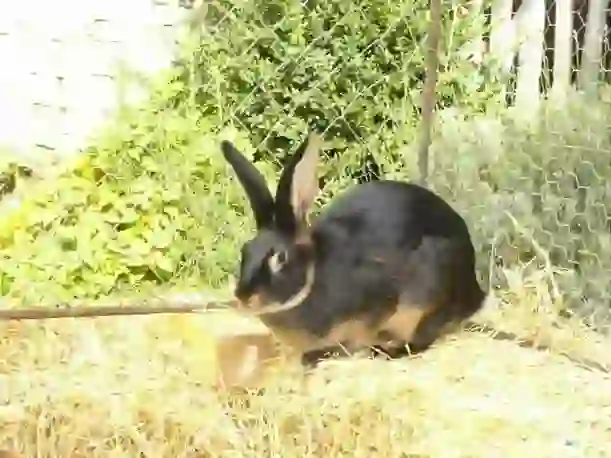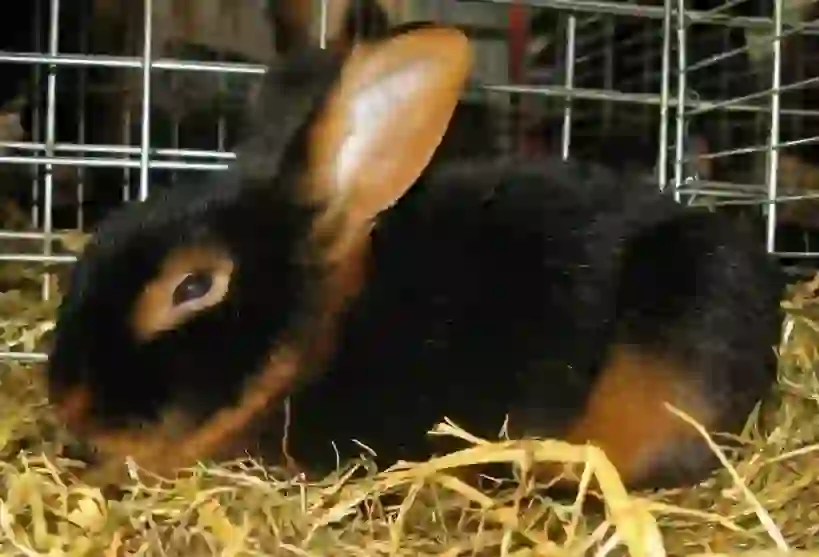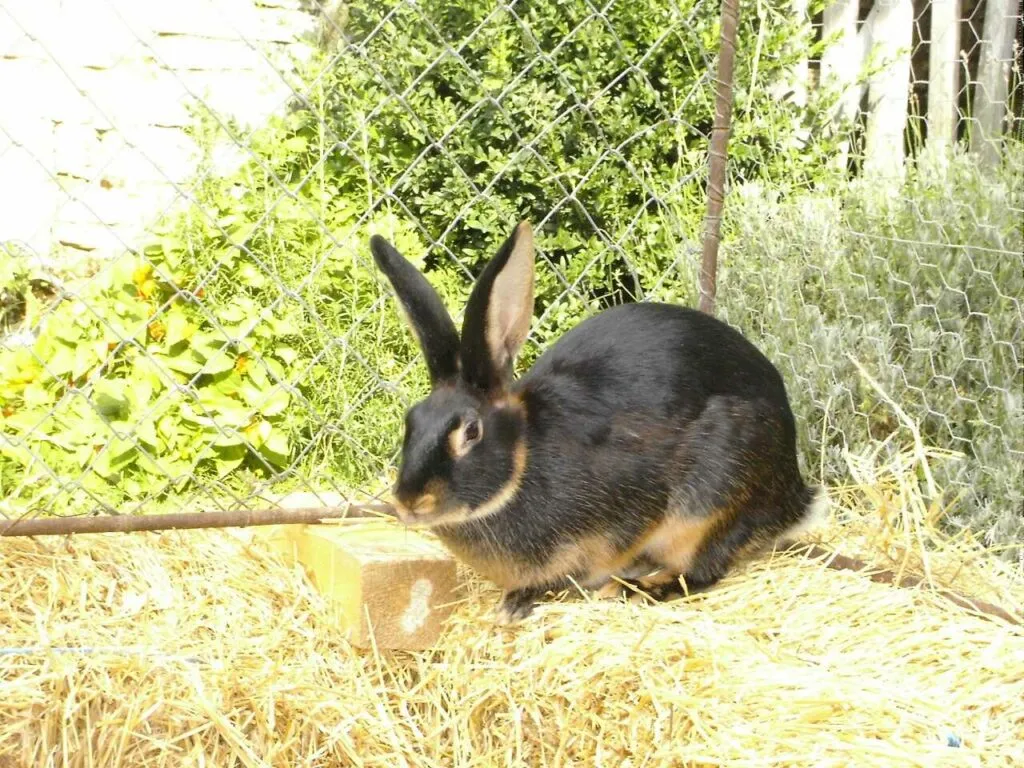
Tan
Tan
Tan
Have you ever heard of a rabbit called 'Tan'? By the way, it's not the 'Tan' that's delicious for grilled meat. Since it's a rabbit not often seen in Japan, those who know it might be quite the rabbit aficionado. On this page, we introduce the secrets of such a Tan. What does the name 'Tan' mean? Its secret is also hidden. Let's take a peek!
Tan Basic Infomation

Country of origin: United Kingdom
Senior/Male 6 months and above 1.81kg to 2.49kg
Senior/Female 6 months and above 1.81kg to 2.72kg
Junior/Both genders under 6 months Minimum weight 910g *According to the American Rabbit Breeders Association (ARBA) standards
Tan is said to be a rabbit developed by human hands, rather than occurring naturally, but the details are still unknown. Going back in history, it is said that the first Tan was born in the United Kingdom in the 1880s.
At that time, only blue and black were recognized as Tan, but in the 1920s, the chocolate color was also developed through breeding with Havana. Later, the lilac color also appeared, and now a total of four colors of Tan are recognized as official breeds.
Tan Q&A

What is the origin of the name 'Tan'?
The name 'Tan' comes from the English word meaning 'light brown or tan color', from which it was named.

What are the color variations of Tan?
Black
Blue
Chocolate
Lilac
There are also blue-gray and brown colors.
Tan is exclusively a short-haired breed.

What does Tan look like?
It has a body type called 'full arch'. The ears are balanced with the body, and the back line has a beautiful arch-shaped curve. The front legs are longer, and the skeletal structure is relatively firm.
The fur is a flyback that grows close to the skin, which is soft to the touch and elastic. And above all, the most distinctive feature is the strikingly clear body color. The beauty condition for Tan is having a clear two-tone body color; for example, if the boundary between the two colors is blurred or jagged, it could result in a lower evaluation at rabbit shows.
Incidentally, the boundary line as the color transition appears in various places such as behind the neck, chest, around the eyes, and on the front and back legs.

Is it true that Tan was originally a large breed of rabbit?
To answer briefly, it's true. As introduced in the basic information, the first Tan was born in the 1880s in England. At that time, Tan was much larger than it is today, though the exact size is unknown. Subsequent selective breeding has led to the fixed size we see today.

Where can you find Tan?
In Japan, the availability of Tan is limited, making it difficult to find specialized breeders. There are Tan breeders abroad, so if you have acquaintances living overseas, it might be easier to find one through this route.

How much does it cost to buy a Tan?
As Tans are rarely seen in Japan, the exact price is unknown. However, their rarity suggests that the purchase price would be high. For instance, a 'show type' rabbit that could potentially win at rabbit shows will be more expensive than a 'pet type' that would be perfectly fine as a household pet.

I want to know more about Tan's personality!
Due to the rarity of their breeding in Japan, details are unclear. However, generally, rabbits dislike being held, and males may spray urine as a courting behavior even towards their owners. Females can become aggressive during heat or when pregnant to protect their offspring. It's likely that Tans share these traits.

What diseases are Tan susceptible to?
Tan are susceptible to 'Rabbit Gastrointestinal Syndrome (RGIS)' and 'Malocclusion'.
Rabbits may accidentally swallow hair during grooming, which if passed with feces causes no issues, but if a large amount of hair clogs the digestive tract, it can lead to loss of appetite or inability to defecate.
This condition was previously known as 'Hairball Disease' due to hair being the cause, but recent studies have shown that other factors can also block the digestive tract, leading to the more general term 'Rabbit Gastrointestinal Syndrome'.
All rabbits are susceptible to this syndrome, so preventive measures include feeding them fibrous Timothy hay, ensuring exercise, avoiding dehydration by providing ample water, and grooming by the owner.
Symptoms include difficulty eating, struggling to drink water, and more. Since rabbit teeth continue growing throughout their lives, they typically gnaw on wood or fibrous food to prevent overgrowth. If the teeth are not worn down due to some reason, this can lead to malocclusion.
If malocclusion progresses, it can cause loss of appetite and diseases like nasolacrimal duct stenosis, so if you notice a change in how the rabbit eats or abnormal tooth growth, it is advised to consult a veterinarian.

What is the lifespan of Tan?
About 8 to 10 years. This is slightly longer than the average lifespan of general rabbits, which is about 6 to 8 years.

Would you like to become a part of the 'Animalbook.jp'?
Turn your knowledge into Q&A and share it with the world. ※Publication will be activated after purchase. Let's share information together!
Tan Type of List

- Tan
Information
Congratulations! You are the first commenter!

Create Your Favorite List!
Tan
Save the animals you love! Build your own list to quickly revisit your favorites later.

Would you like to leave a comment?
※Please note: This is for the purchase of rights to post comments within the article.
Find Your Favorites!
Our shop offers a unique and attractive selection of goods themed around various animals.
Tan References
Tan Introduction of media used

出典:https://commons.wikimedia.org/wiki/File:Lapin chèvre.JPG

Help Enrich Our Animalbook.jp with Your Media!
We are constantly looking to expand and enrich our Animalbook.jp with amazing photos and videos of animals. If you have any media that you'd like to share, please contribute and help us showcase the beauty and diversity of the animal kingdom. Your submissions will be credited and featured in our encyclopedia, reaching a wide audience of animal lovers.


















